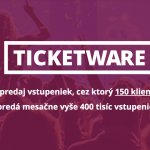I received an invitation from a business partner from Slovakia to take part with him in business negotiations about the supply of goods from Ukraine to Slovakia. Before I got truly interested in participating, I had no idea of everything that would be needed and all I would have to undergo in order to appear at the negotiations.
The first obstacle I ran into was a visa. The Slovak Republic is a member state of the European Union as well as a member state of the Schengen Area. As a citizen of the Ukraine I need a visa to travel to Slovakia. I began to look around, and I found out that there are two places in Ukraine where I can get a visa for Slovakia, namely at the Consular Department of the Embassy of the Slovak Republic (Ukraine, 010 34, Kiev, ul. Patoržinského 14; tel.: +38 (044) 220 12 03), and at the General Consulate of the Slovak Republic in Užhorod (Ukraine, 88000, Užhorod, ul. Lokoty 4; tel.: +38 (0312) 613495). I was a little surprised that a common invitation from my Slovak business partner was not sufficient and that I have to request additional documents from him; but in the end I successfully completed the visa application and submitted it at the relevant consulate. Information on the Web page of the Embassy of the Slovak Republic in Kiev (www.slovakia.kiev.ua) also helped me with this; it’s there I found a list of documents which are necessary to submit with an application for a granting a visa to the Schengen Area.
After several days I picked up my visa and I was ready to travel. I decided how I would travel. I had several options to choose from: I could travel by train, airplane, bus or car. I know that Slovakia is a beautiful country with a great many cultural monuments and natural beauties. This is why I decided to travel by car. I hoped to have the opportunity to organize the journey such that I could combine work with some relaxation time.
Because I had a Schengen visa issued by the Slovak Republic, I followed the recommendation that I enter the Schengen Area the first time through a common border between Slovakia and Ukraine, despite the fact that for me doing so through another country would have been more advantageous and, as I later learned, even faster. I purchased a green card, checked the documents and headed off on my trip. For crossing the border I had a choice of two border-crossings – Užhorod-Vyšné Nemecké, or Malyj Bereznyj-Ubľa. I chose the border crossing in Užhorod. I was a bit unpleasantly surprised at the waiting period, but from discussions with other drivers waiting at the border, I found out that I had merely selected the wrong time for the trip. In addition, I also found out from them everything that may be asked of me by the Slovak border police. Luckily, I had an invitation from my Slovak business partner, on the basis of which the visa was granted to me, and a green card for the car as well as the insurance policy for medical costs and also sufficient financial resources in cash for a stay in Slovakia. Given the fact that I don’t smoke and I carried only a single one-litre bottle of alcohol as a consideration for my business partner, there was no danger that I was violating any customs regulations, which permit me to take only 40 cigarettes and one litre of hard alcohol into Slovakia (you’ll find an exact list of goods freed from customs VAT and consumer taxes on the Web page: https://www.financnasprava.sk/sk/obcania/clo/oslobodenie-od-cla-dph-a-spd). Obviously, the ban on carrying dairy products and products of animal origin into the European Union applies. So instructed and morally prepared, I managed my passage through passport and customs control relatively smoothly.
Immediately after entering Slovakia I noticed that the speed limits on the roads differ from those in Ukraine. Within municipalities a car can only go 50 km per hour, and in Slovakia the tolerance of exceeding the speed limit by 20 km certainly doesn’t apply, as it does in Ukraine. Because I wanted to use the motorway, at the nearest petrol station I bought an electronic motorway vignette (more information can be found even in Russian on the Web page: www.eznamka.sk). Also beware of small differences in the road traffic rules; for example, at stop lights in Slovakia one cannot make a U-turn, if not explicitly permitted by a traffic sign.
Luckily, I arrived at my target and finally met my business partner. We agreed on further cooperation, signed contracts and set the date for the next meeting. Since the first time I had only been granted a single-visit visa, my business partner prepared a new invitation for me as well as a new statement from the commercial register, so that I could upon returning submit a new application for a visa to the Schengen Area.
I checked on the Schengen calculator (https://ec.europa.eu/assets/home/visa-calculator/calculator.htm?lang=en) the permitted number of days I could stay in the Schengen Area, and I decided to spend several days wandering around Slovakia. I had some wonderful moments there. I would have stayed longer, but the number of days allowed in the Schengen Area, which is given on the visa, is rather strict. In order to avoid any problems at the border-crossing or with getting a new visa, I decided not to exceed the permitted length of stay.
After returning to Ukraine I again submitted a visa application. This time I tried the service of the visa centre. In the case of the visa centre, registration for a specific date is not necessary, as in the case of the consulate. Visa centres should service all clients who come on the given day to submit a visa application (I found more information on the Web page www.pony-visa.com.ua).
Now I am impatiently waiting for the issuing of a new Schengen visa, so I can return to Slovakia as soon as possible and continue in the started projects. At the conclusion, a few more practical notes.
Identification documents
An identification document in Slovakia is only the ID card of a citizen of an EU member state. In the case of residents of third countries (those outside the EU), the only valid identification document is a passport. If you are citizen of a country which still does not have a visa-free regimen, you will need a visa or another document which authorises you to legally be on the territory of the Slovak Republic. Thus, this document is either a valid Schengen Area visa or a national visa from another state of the Schengen Area. This may also be a document confirming that you have some type of residence (transfer, permanent, long-term…) on the territory of a member state of the Schengen Area. Upon control by the police authorities in Slovakia you are obligated to submit a passport in which there is a valid visa, or a passport and a document on residence. If you do not have a valid passport with you, you are in danger of being fined up to 165 EUR. A driving license is not an identification document. Likewise, you must be able upon request by the police authority to demonstrate that you have valid medical insurance and sufficient financial resources for your stay.
Language
The Slovak language, like the Ukrainian language, is one of the Slavic languages. They are therefore related. With a bit of effort you will be able to communicate with Slovaks. Each day this becomes easier. Beware, however, of certain words that sound the same in both languages but which have completely different meanings. This may get you into comical and sometimes unpleasant situations.
For example:
čerstvý – черствий
úžasný – ужасний
voňať – воняти
páchnuť – пахнути
These words sound the same, but they have completely opposite meanings in the two languages. Therefore, in Slovakia the shops sell “čerstvý chlieb” (fresh bread), but in Ukraine no one would ever buy “черствий хліб” (čerstvyj chlib – stale bread). In the same way comical situations could occur when buying gifts in a perfume shop, where in Slovakia you buy something that smells wonderfully (úžasne vonia), but in Ukraine you would perhaps not go over well with a gift which “ужасно воняє” (užasno voňaje – stinks terribly).









Add Comment